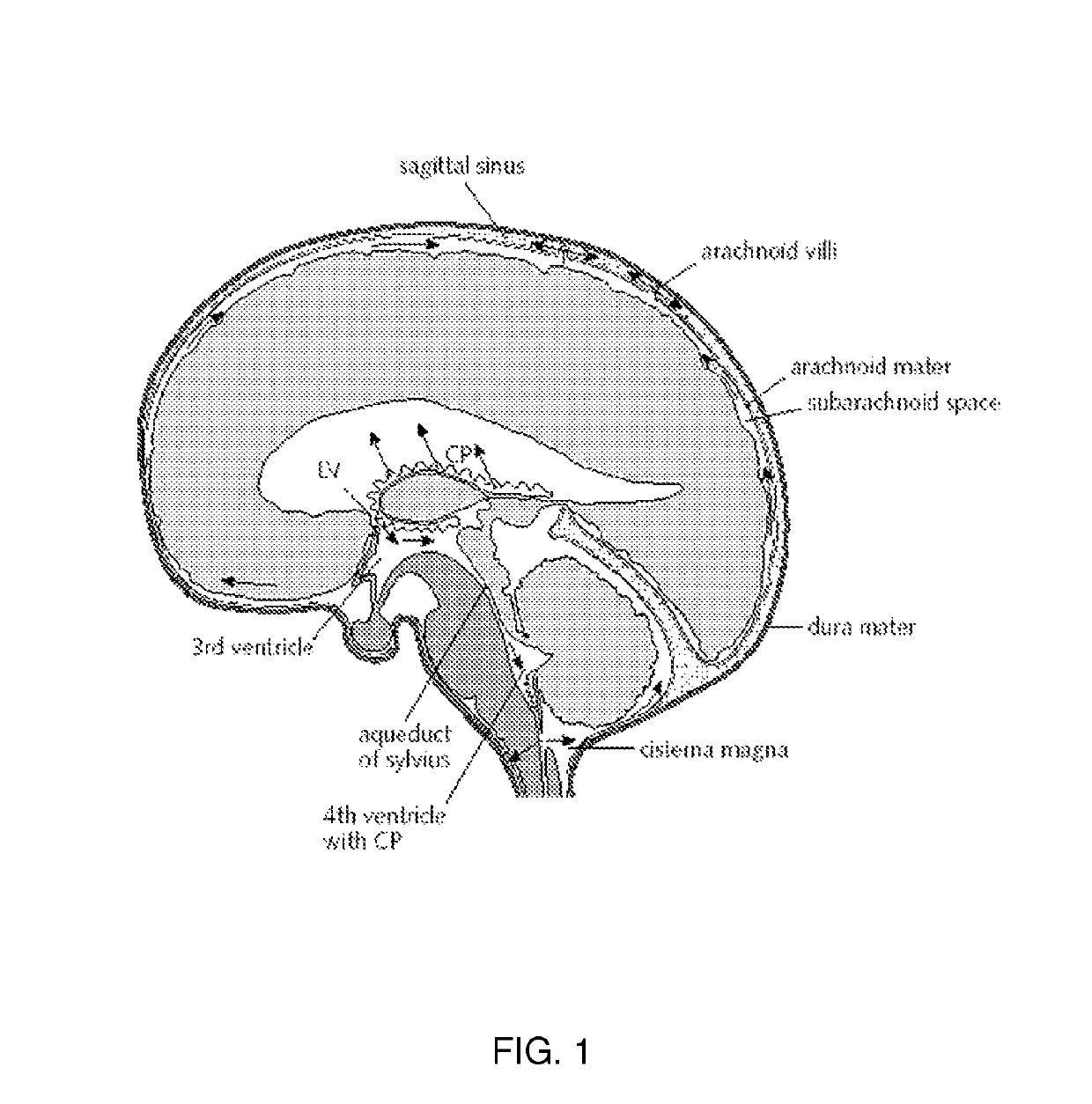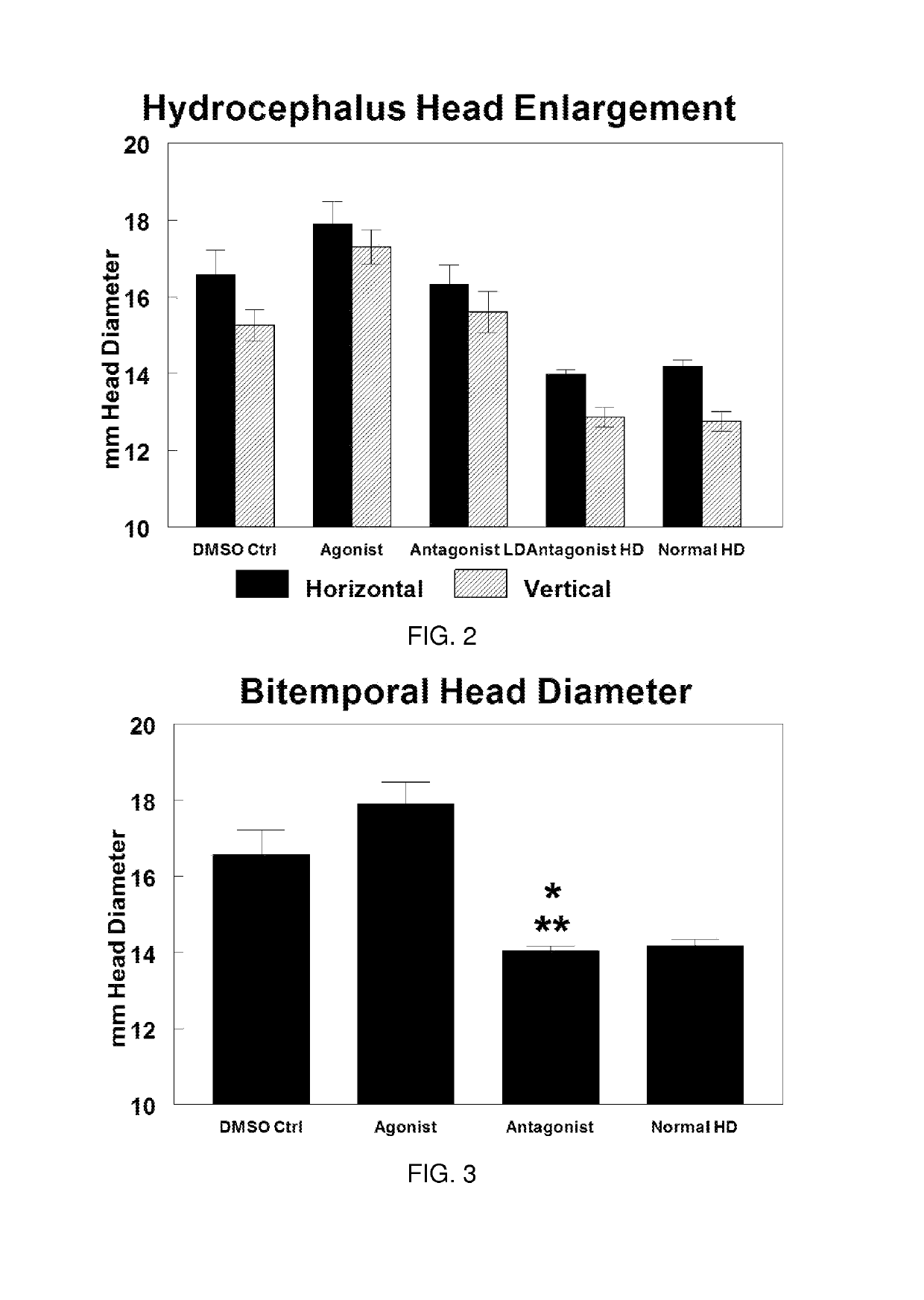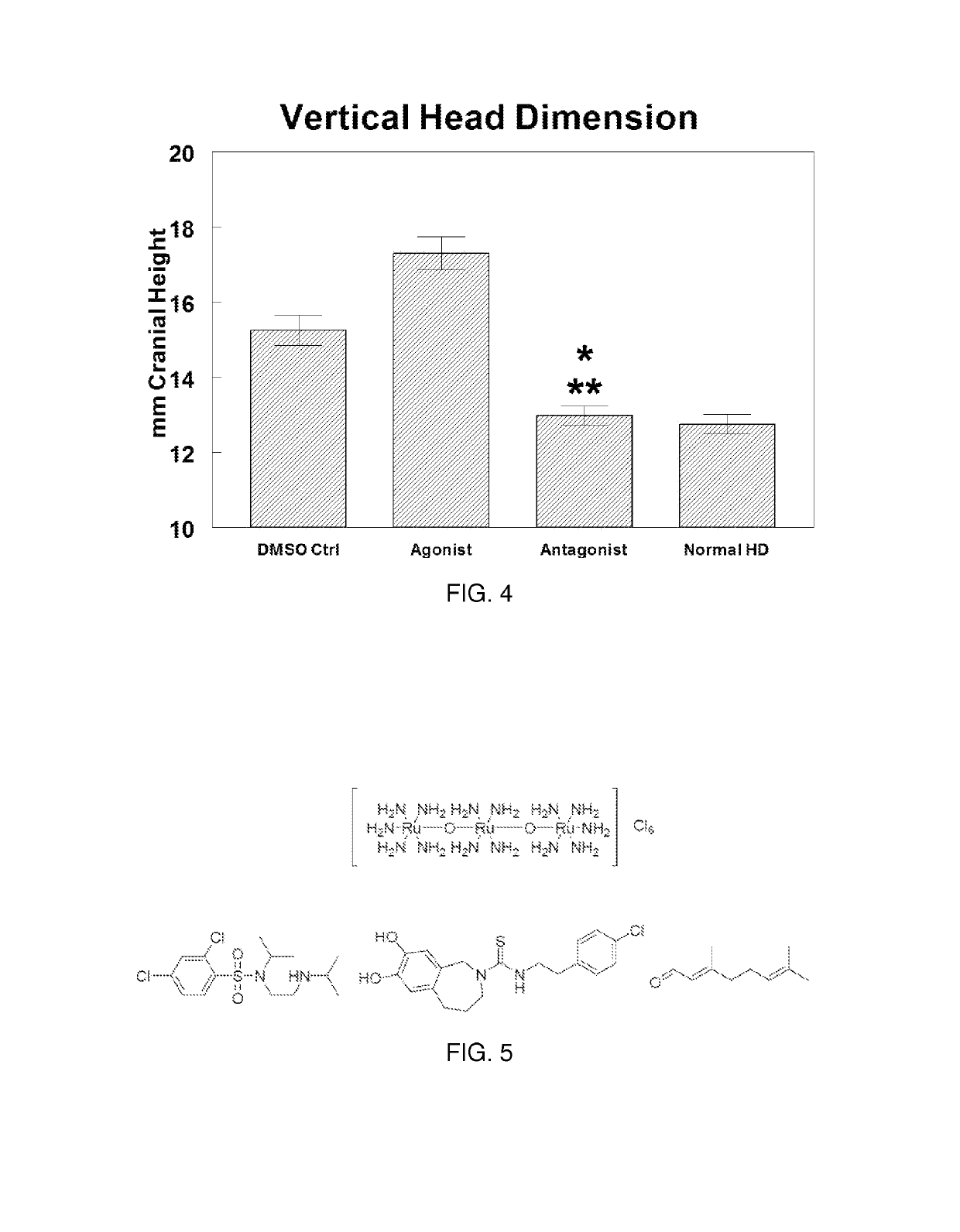Use of TRPV4 antagonists to ameliorate hydrocephalus and related materials and methods
a technology of trpv4 and antagonists, which is applied in the direction of drug compositions, wound drains, heterocyclic compound active ingredients, etc., can solve the problems of increased pressure and tissue damage, neuronal death and long-term complications, and increase so as to and reduce the risk of hydrocephalus
- Summary
- Abstract
- Description
- Claims
- Application Information
AI Technical Summary
Benefits of technology
Problems solved by technology
Method used
Image
Examples
example 1
and Methods
[0109]Wistar Wpk / Wpk rats are an orthologous model of human type 3 Meckel Syndrome. Meckel Syndrome is a cilliopathology with both renal cystic and brain pathology. The brain pathology is severe hydrocephalus with hypoplasia of the corpus callosum.
example 2
nist and Antagonist Introduction to Wpk / Wpk Rats
[0110]The inventors treated Wpk / Wpk affected as well as noncystic littermates with either TRPV4 agonist (GSK1016797, 0.003 mg / kg body weight) or antagonist (HC067047, 0.03 mg / kg) from day 8 through 17 and evaluated the cranial enlargement and cerebral manifestations. Both drugs were dissolved in DMSO prior to dilution with normal saline prior to injection (i.p.).
[0111]The cranial enlargement at day 17 of agonist treatment was sufficiently severe to require termination. However, treatment with the specific TRPV4 antagonist appears to almost totally ameliorate the hydrocephalic enlargement of the cranium / brain. The antagonist treated rats were also very active and alert like their nonaffected littermates. Treatments did not affect the renal pathology, only the cerebral pathology. FIGS. 2, 3, and 4 show the results.
[0112]The antagonist treatment limited the brain and cranial enlargement so that the rats were equivalent to their nonaffecte...
example 3
TRPV4 Antagonist RN-1734 in Wpk / Wpk Rats
[0114]Wpk / Wpk affected as well as noncystic littermates were treated with TRPV4 antagonist RN-1734 from day 8 through 17 and evaluated the kidney weight and cerebral manifestations (bitemporal head diameter and vertical head dimensions / cranial height). Both drugs were dissolved in DMSO prior to dilution with normal saline prior to injection (i.p.).
[0115]Treatment with the specific TRPV4 antagonist appears to almost totally ameliorate the hydrocephalic enlargement of the cranium / brain. The antagonist treated rats were also very active and alert like their nonaffected littermates. Treatments did not affect the renal pathology, only the cerebral pathology. FIGS. 15, 16, 17, and 18 show the results.
[0116]The antagonist treatment limited the brain and cranial enlargement so that the rats were equivalent to their nonaffected littermates (Mean+SEM, *=<0.01 for difference from DMSO control, there was no difference in head dimensions between TRPV4 anta...
PUM
| Property | Measurement | Unit |
|---|---|---|
| structural defect | aaaaa | aaaaa |
| metabolic defect | aaaaa | aaaaa |
| adhesion | aaaaa | aaaaa |
Abstract
Description
Claims
Application Information
 Login to View More
Login to View More - R&D
- Intellectual Property
- Life Sciences
- Materials
- Tech Scout
- Unparalleled Data Quality
- Higher Quality Content
- 60% Fewer Hallucinations
Browse by: Latest US Patents, China's latest patents, Technical Efficacy Thesaurus, Application Domain, Technology Topic, Popular Technical Reports.
© 2025 PatSnap. All rights reserved.Legal|Privacy policy|Modern Slavery Act Transparency Statement|Sitemap|About US| Contact US: help@patsnap.com



